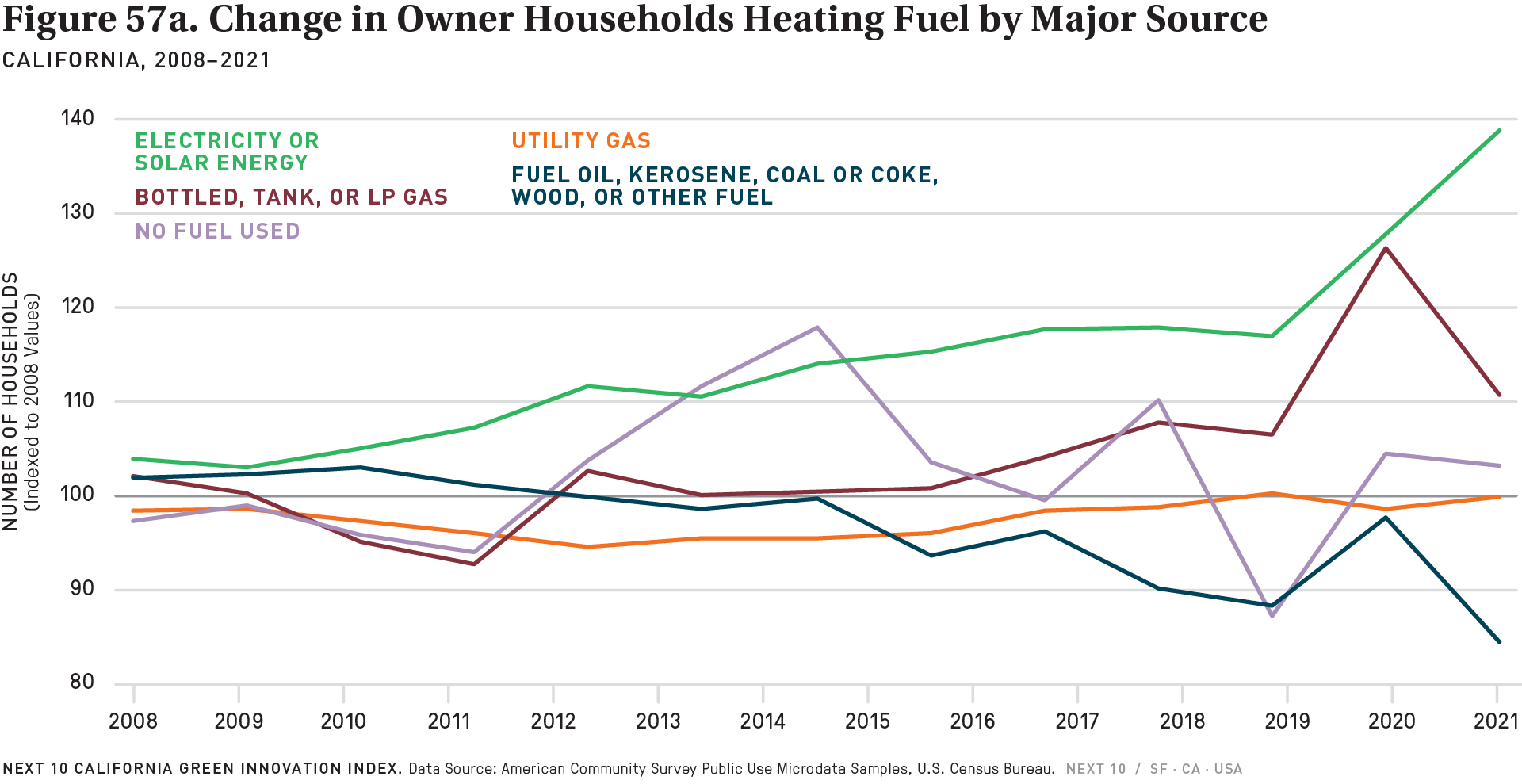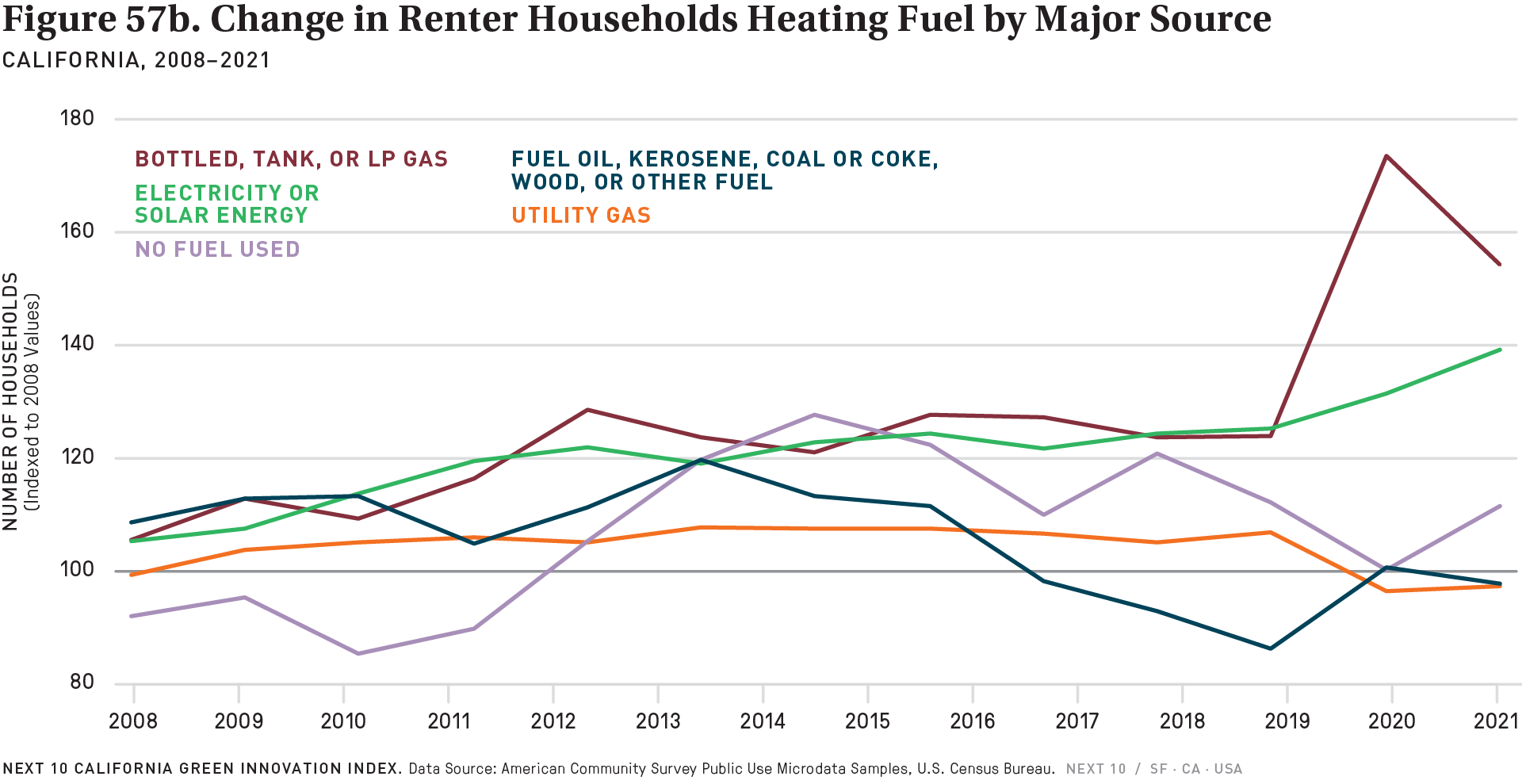Highlight
- In 2021, owner-occupied homes with electricity or solar energy as the primary heating fuel saw the second-largest year-over-year increase of 8.6 percent since 2007. The largest increase was 9.2 percent from 2019 to 2020. In 2021, homes powered by electricity grew 8.6 percent while homes powered by solar energy grew 31.6 percent. U.S. Solar households continue to skew toward high incomes, although slightly less than previously. The median household income of 2010 solar adopters is $129,000, compared to $110,000 for 2021 solar adopters.189 Conversely, although the no fuel used subsector captured the most significant yearly growth in 2021 (+11.2%), at a sub-category level, fuel oil, kerosene, etc. was also the fastest-increasing (+38.6%) primary heating fuel among renter households, followed by the coal or coke subsector (21.6%) from 2020. Electricity or solar energy has the highest growth in terms of share among all other fuels. These households made up 40.9 percent of all renter-occupied households in California in 2021, up from 33.2 percent in 2008. Renter-occupied units (40.9%) were about twice as likely to be powered by electricity or solar energy than owner-occupied units (21.4%) in 2021—mostly electricity in this case. Additionally, utility gas consumption is 20 percent more in owner-occupied units than renter-occupied units. With the passage of the Inflation Reduction Act (IRA), households can save an average of $1,800 per year on household heating both directly (significant savings for disadvantaged communities and household making less than 150 percent of a region’s median income) and indirectly. The IRA also commits $9 billion in residential tax credits, rebates, and other investments for building new electric and energy-efficient homes and replacing fossil-fuel-reliant systems in existing homes with electric equivalents.190
189 Lawrence Berkeley National Laboratory. New Berkeley Lab report on solar-adopter income and demographic trends. November 1,2022. Retrieved from: https://emp.lbl.gov/news/new-berkeley-lab-report-solar-adopter-2.
190 Brookings. The Inflation Reduction Act will reduce household energy insecurity—but it could do more. August 22, 2022.Retrieved from: https://www.brookings.edu/blog/the-avenue/2022/08/22/the-inflation-reduction-act-will-reduce-household-energy-insecurity-but-it-could-do-more/
Challenge
- Bottled, tank, or LP gas household consumption as a major source of home heating increased 40 percent, in renter-occupied units in 2020. This large increase was pandemic-related as the consumption decreased by 11 percent in 2021. The 2020 pandemic period saw increased demand for seasonal homes and camping, and with it, propane energy. Much of this spike was likely ephemeral, but the episode still points to a need to electrify infrastructure in rural areas.
191 Propane Education and Research Council, “National Profile” Available at:https://propane.com/providers/national-and-state-propane-profiles/national-profile/
More About
Energy Efficiency
Related Content


